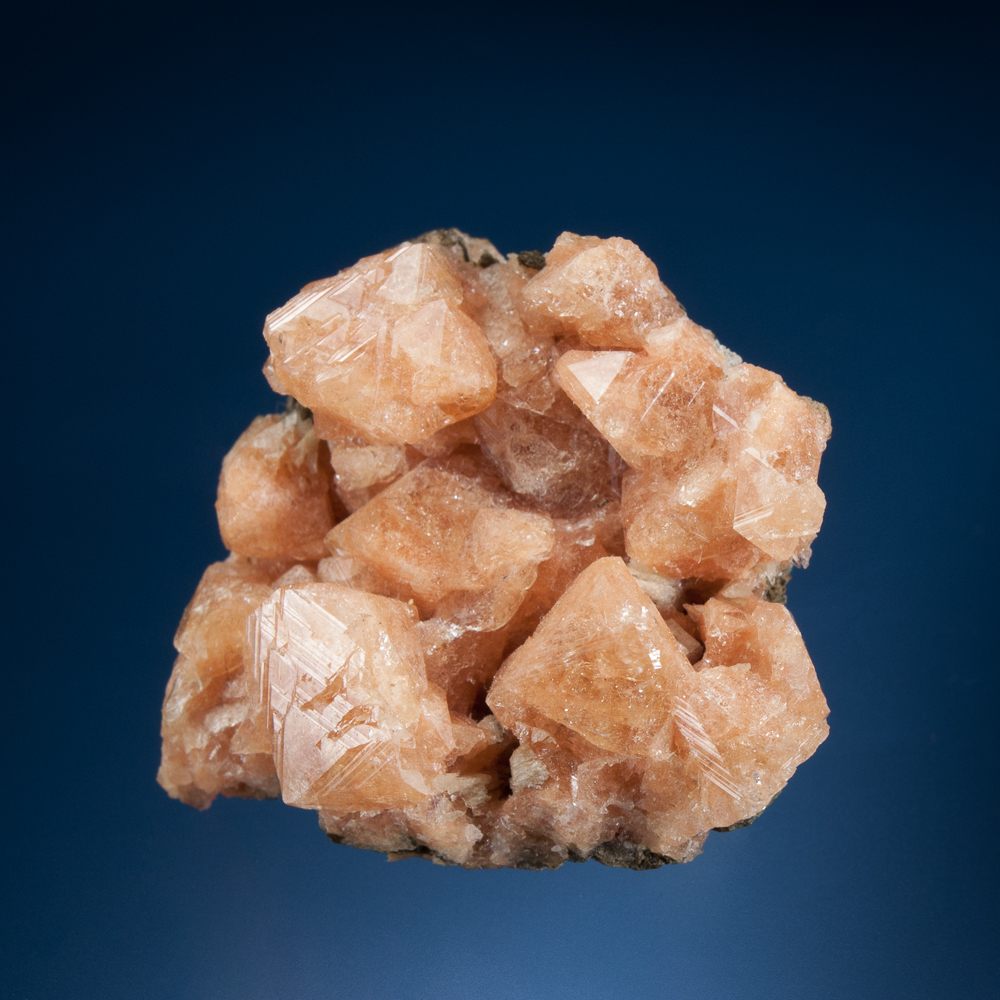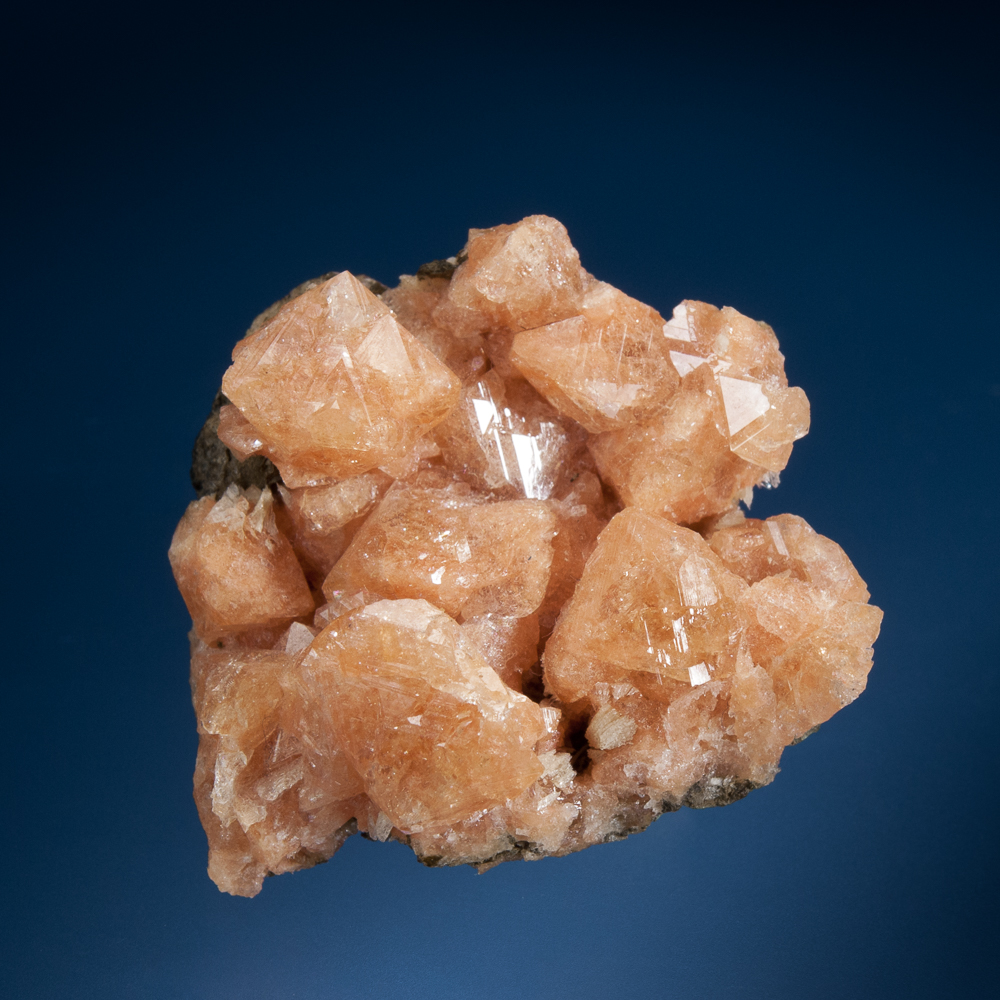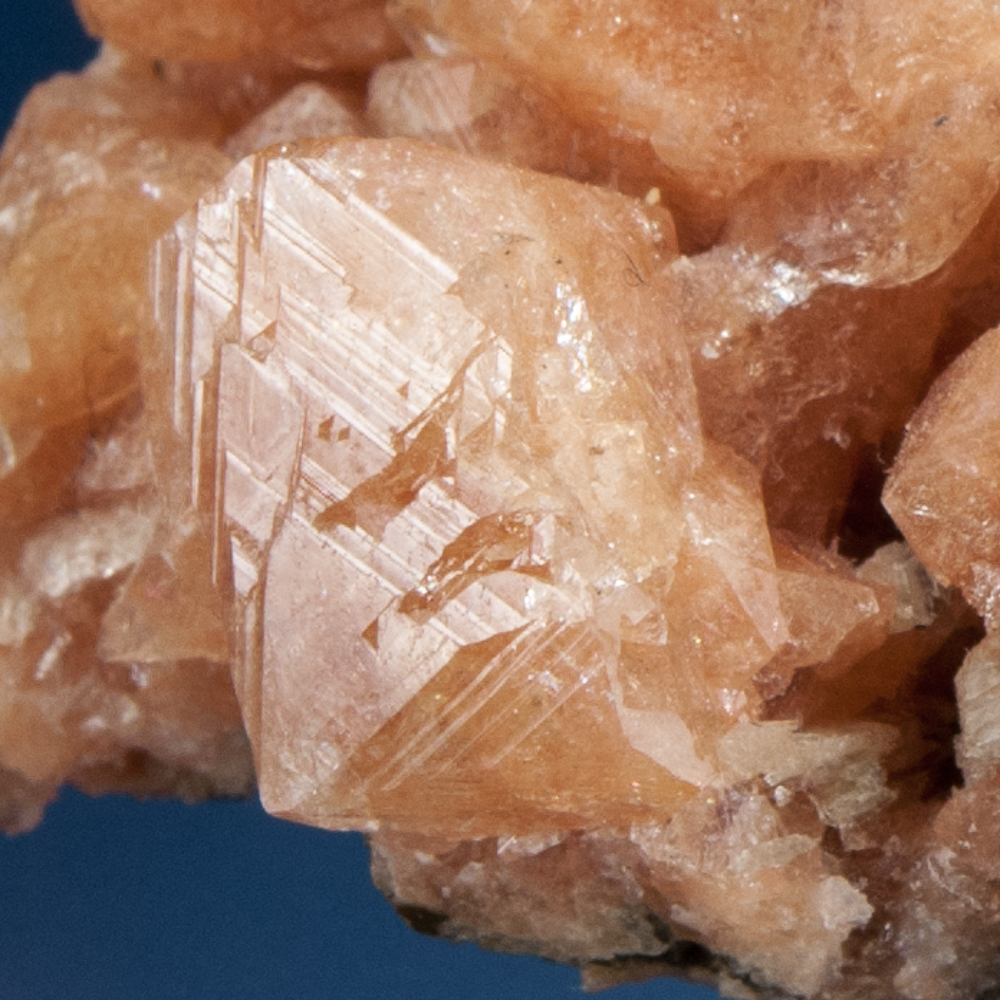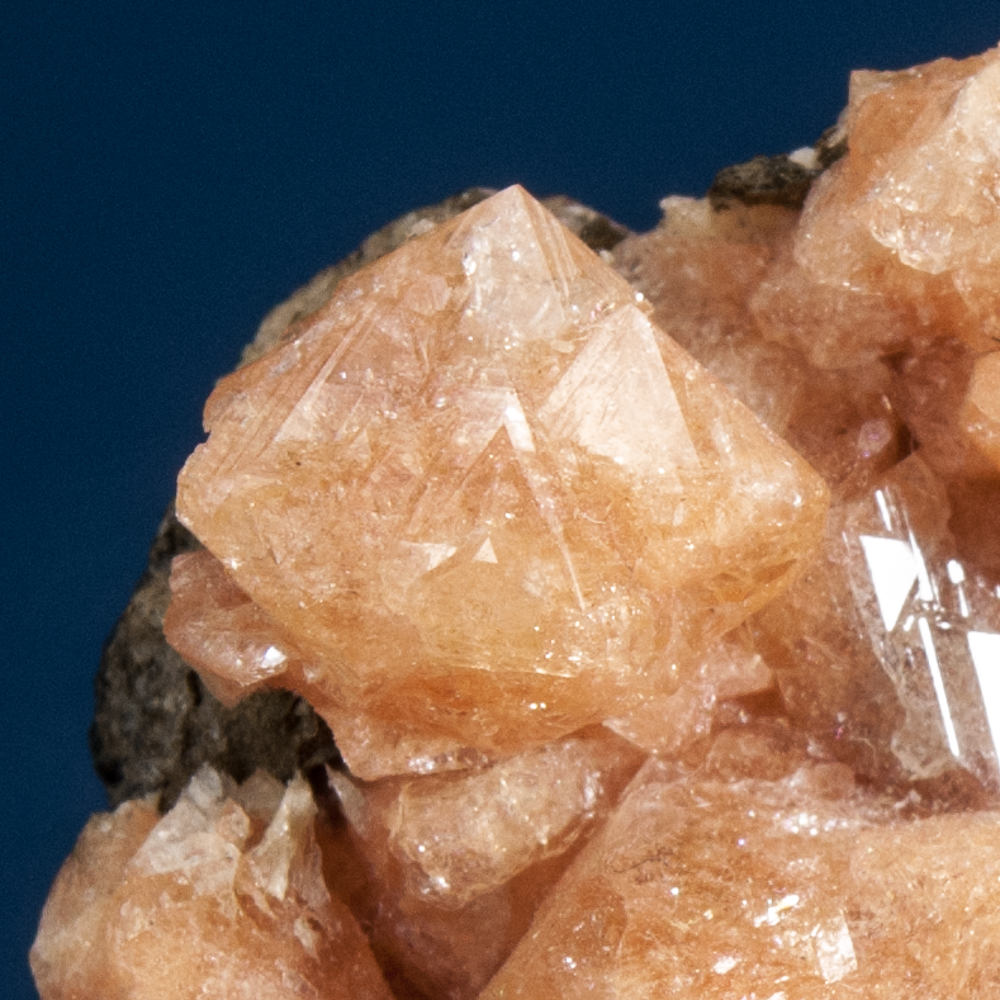Description
Detailed Description
Sharp lustrous gmelinite crystals with beautiful bright faces and nice colour. These may have begun forming as pseudomorphs after chabazite but they are pure gmelinite, with easily discernible gmelinite crystal habits. In excellent condition. Gorgeous crystals.
Browse more specimens from Nova Scotia (click here)
About the Islands Localities on the Bay of Fundy (click here)
About These Gmelinites
Truly great, display-quality specimens of gmelinite are known from very few localities worldwide. These specimens of gmelinite from Pinnacle Rock are exceptional for the mineral – brilliant glassy lustre, sharp, with fantastic, intricate crystallization patterns.
The mode of occurrence has been described as “gmelinite on chabazite” and also “gmelinite after chabazite”. These specimens are comprised of a crystallized layer of gmelinite over chabazite, so that the overall shape is the rhombohedral chabazite form. Most of these retain a chabazite core to some degree, although often the chabazite can be quite porous, and some specimens are partial epimorphs, where the original chabazite core area has at least partially dissolved away altogether, leaving hollow spaces inside the outer gmelinite crystal layer. Given the overall exterior chabazite form, they are “gmelinite pseudomorphs after chabazite”, however it is important to distinguish that these are not gmelinite as a mere replacement material: the beautiful crystallization of the gmelinite prominently displays morphological habits and growth patterns, and it is these brilliant gmelinite crystal growths and overgrowths that make these specimens special.
These specimens are gmelinite-Na, as analyzed by the RRUFF Project.
Situated in the Five Islands, in the Bay of Fundy, this locality is a classic, described in reports in Canada and the U.S. dating back to the 19th century. Specimens from Pinnacle Island (albeit as “Pinnack Island”) are included in Victor Goldschmidt’s famous early 20th century Atlas der Krystallformen.
Pinnacle Rock produced spectacular specimens in 2004 and 2006 (the specimens here were among them). Unfortunately, a major area where specimens were found has now collapsed into the Bay of Fundy and has been washed away by the sea.





